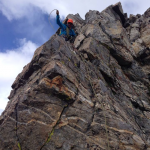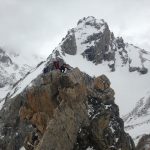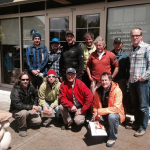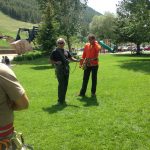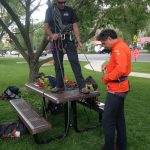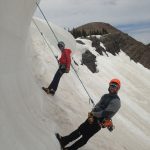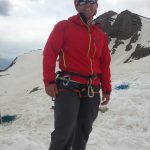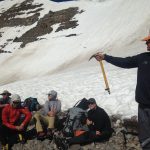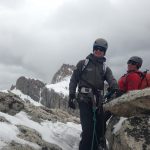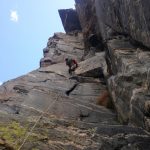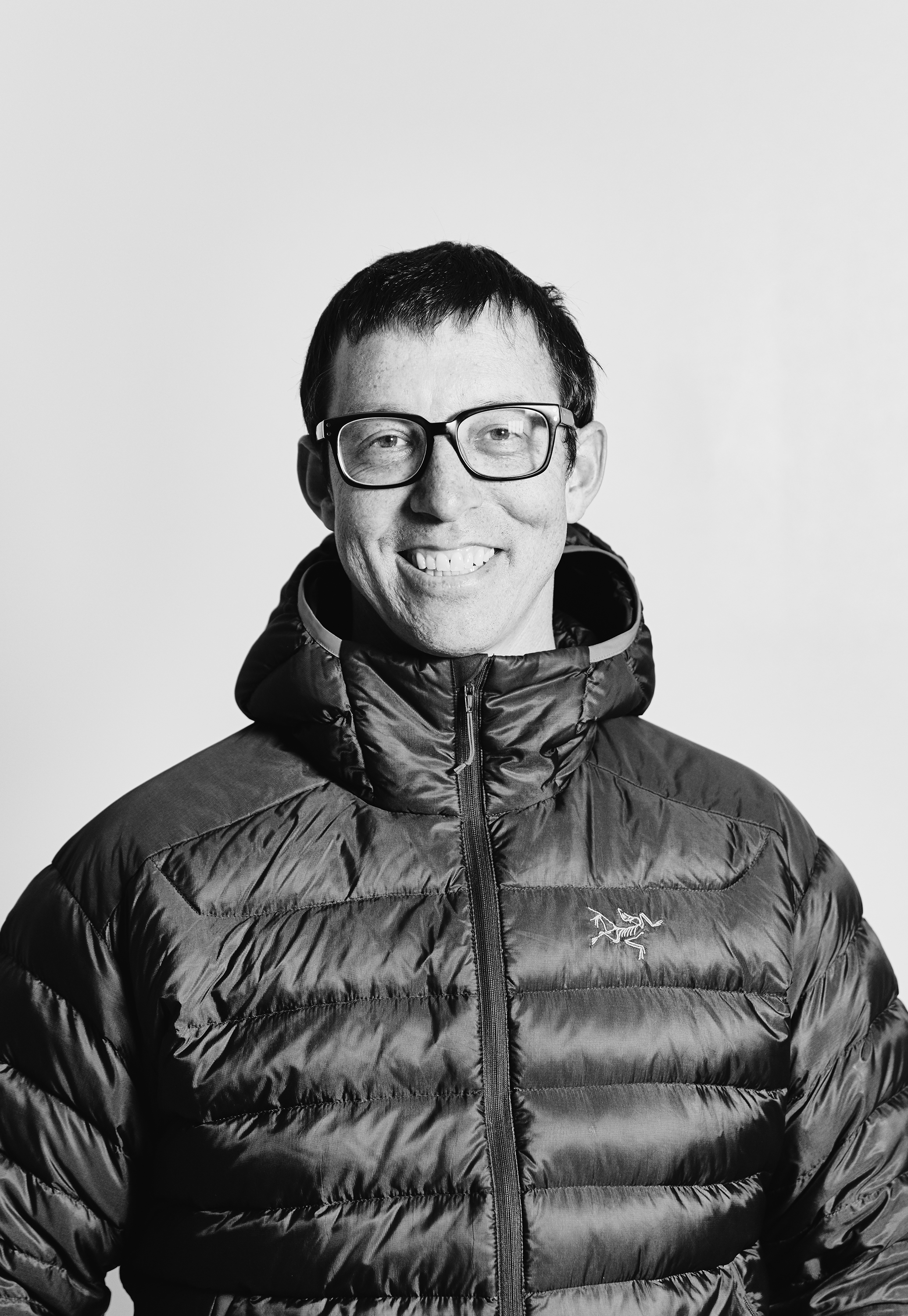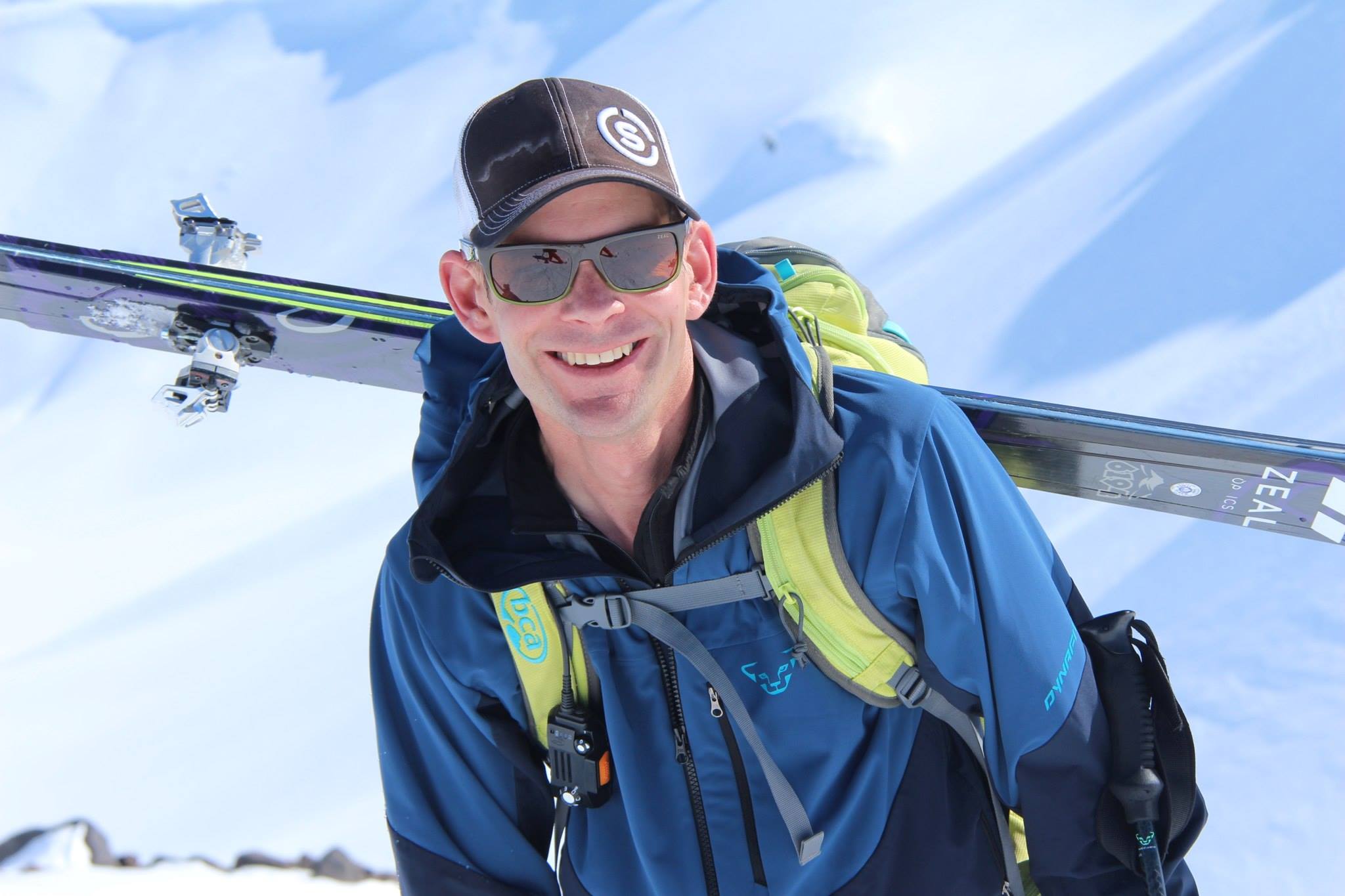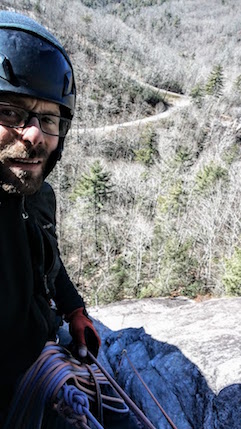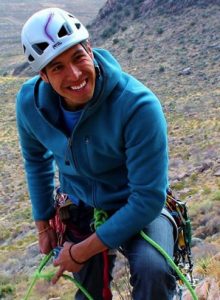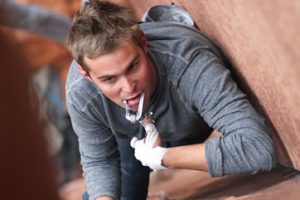Matt Shove on Taking the Alpine Guide Course
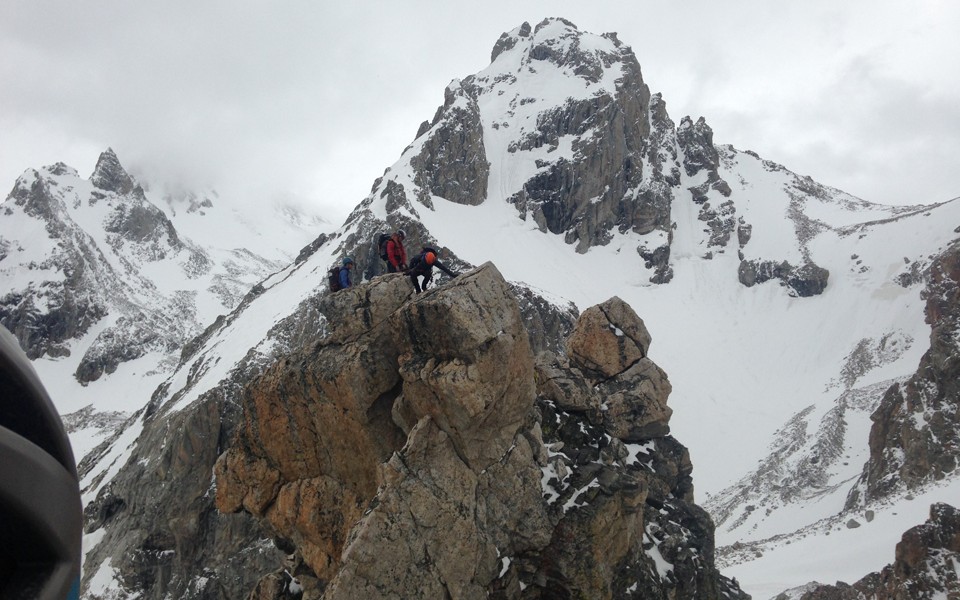
Photos & text by Matt Shove, Certified Rock Instructor & Millet Scholarship Recipient
My Alpine Guide course began with a four-connection flight to Jackson Hole, Wyo., with a late night pick up from Scott Perkins. Scott is a mutual friend, who turned out to be a great climbing partner for a few warm up climbs. Scott proved to be motivated, solid in every aspect, and managed to crack a joke every time things got challenging.
 After a bivy at Jenny Lake, we pulled a permit for Buck Mountain’s East Ridge. We didn’t actually plan for it, but an early morning drive down the road illuminated the snow arête, and that lit up our radar. Brendan Commanada, a friend of Scott’s from his RGC was in town and joined us. Being from the east coast, I was reminded that hiking up to 9500’ on your first day in town is never a fun or pleasant experience. We found a splendid bivy in the last stand of trees to rest for a 3 a.m. alpine start. We found firm snow in the early morning darkness and a 4th class mixed ridge that brought us to the summit. Buck Mountain provided us a perfect view of the southern end of the Teton Range. Over the next few days, we continued to train on the SW Ridge of Symmetry Spire, and the Dihedral of Horrors in Death Canyon. All three routes were stellar, and each route had engaging climbing.
After a bivy at Jenny Lake, we pulled a permit for Buck Mountain’s East Ridge. We didn’t actually plan for it, but an early morning drive down the road illuminated the snow arête, and that lit up our radar. Brendan Commanada, a friend of Scott’s from his RGC was in town and joined us. Being from the east coast, I was reminded that hiking up to 9500’ on your first day in town is never a fun or pleasant experience. We found a splendid bivy in the last stand of trees to rest for a 3 a.m. alpine start. We found firm snow in the early morning darkness and a 4th class mixed ridge that brought us to the summit. Buck Mountain provided us a perfect view of the southern end of the Teton Range. Over the next few days, we continued to train on the SW Ridge of Symmetry Spire, and the Dihedral of Horrors in Death Canyon. All three routes were stellar, and each route had engaging climbing.
Once our course began, we found ourselves reviewing short rope and short pitch procedures and techniques. Marc Chauvin, Tom Hargis, and Rob Hess made certain we were all prepared for our upcoming day out to Hidden Falls for transition practice. Once we completed this, we rode the tram to the summit of Jackson Hole Resort and hiked into the Cody Bowl Pucker Face for a day of snow school and crevasse rescue practice. We had a fun and efficient day preparing for out subsequent routes.
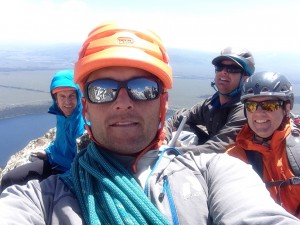
Matt Shove with one of his groups.
My team now consisted of Jacob Schmitz form Oregon, and Ron Paproski of upstate New York. Rob Hess climbed with us, and our group became a force to be reckoned with. Jacob took us up the 2000’ Symmetry Couloir, I took us from the col to the summit of Storm Point and back down, and Ron took us up and down Ice Point. The climbing was fun and engaging; especially the knife-edge ridge climbing of Ice Point.
The next day found Jacob, Marc Chauvin, and I headed back up the Symmetry Couloir with our objective being the SW Ridge. Heavy weather rolled in, and we opted to gain the summit via the SW Couloir and the north face. This led us to another summit. From here, Marc took us down the direct south ridge. This was an excellent demonstration of how terrain may look harder than it really is. It was eye opening, and a fantastic example of guiding in seemingly improbable terrain with adverse weather conditions. Once back on the platform, Jacob took over and we made a technical descent of the couloir. Jacob was proving to be a great partner for the objective days. I appreciated his many years of experience on steep snow. He always looked solid and never complained about the slog. The heavy weather carried on throughout the remainder of the trip, and our objectives had to change to meet our specific learning needs and the needs of the larger team.
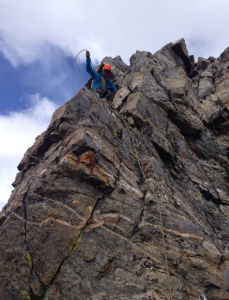
Marc Chauvin.
An afternoon session of land navigation proved to be the crux for me. This new method of determining distance, pace, and time was fantastic, and the presentation was well prepared. By utilizing the Munter Method, the Guide Pace App, and a UTM card reader, I learned to break down a route plan into a leg-by-leg process that made time calculations a breeze.
After weather conditions were confirmed (12+ inches of snow above 9500′ with heavy wind), we decided on the Spoon Couloir to the East Ridge of Disappointment Peak as our final climb. I was again paired with Jacob along with Tom Hargis. Jacob took the first leg of the route, and I led the ridge, and descent down the Lake Ledges Right. Things went well, and the descent was thought provoking and enjoyable. Rappelling into a 60-degree snowfield as your only option will force you to think outside of the box. A t-slot anchor and belayed down climb led back to the trail, and two hours later, we completed the technical components of the course. Our group and individual debriefs were completed the following day.
It’s never easy to be reviewed by peers or instructors/examiners. It can cloud one’s thinking, create anxiety, and even force some to make decisions they might not normally make. The reality is that this level of training is formal mentorship by experienced and qualified guides. That brings a level of competence not often paralleled in many professions. I appreciate the level of instruction and guidance this course provided, and I would recommend it to anyone interested.
I would like to thank Millet. Without their generous support, this trip to the Alps of the American West would not have been possible. Thank you Maro, and thank you Millet!
- The summit of Disappointment Peak.
- Tom Hargis and Marc Chauvin teaching a lawn lesson.
- Tom Hargis and Marc Chauvin
- Matt Shove
- Sam Hennessy, short ropes up Spoon Couloir.
- On the summit of Disappointment Peak.
- Scott Perkins
- Scott Perkins in the Dihedral of Horros Death Canyon.

